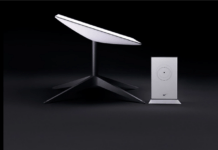The building designed by algorithm
With buildings crawling up in Dubai, one cannot fail to notice the construction of Museum of the future. The construction of this museum is considered as one of the most complex construction ever carried out in Dubai.
The museum’s framework, comprising 2,400 diagonally intersecting steel members, was completed in November 2018; the facade panels now are being lifted into place.
The museum is due to open in a year – a momentous time for Dubai as it will be hosting the World Expo from 20 October 2020.
The architectural world defines the futuristic shape of the museum as a torus with an elliptical void, but a giant hula hoop might be a more accessible point of reference.
Lath Carlson, executive director of the Museum of the Future, prefers to liken it to an eye. “We struggle a bit to describe the building to people who haven’t seen it,” he admits. “There is nothing that quite evokes the shape.”
Local architectural firm Killa Design, which won the design competition for the museum in 2015, came up with the shape.
According to the architect, the solid part of the structure represents the knowledge that we have today. The void represents all that we do not yet know – in other words, the future.
The lead consultant on the project, the UK’s BuroHappold Engineering, says it would have been an impossible undertaking without parametric design and Building Information Modelling (Bim).
Parametric design is a process based on algorithmic thinking, which allows specific variables or parameters to be manipulated to alter the outcome of an equation.
Bim is a three-dimensional model-based technology for construction professionals to collaboratively design and document projects. Although Bim has been around for many years, the industry has been slow to embrace it.

Do you have any news or article you would like us to publish? Kindly reach us via outreach@t4d.co.ke or howtodoafrica@gmail.com.




















